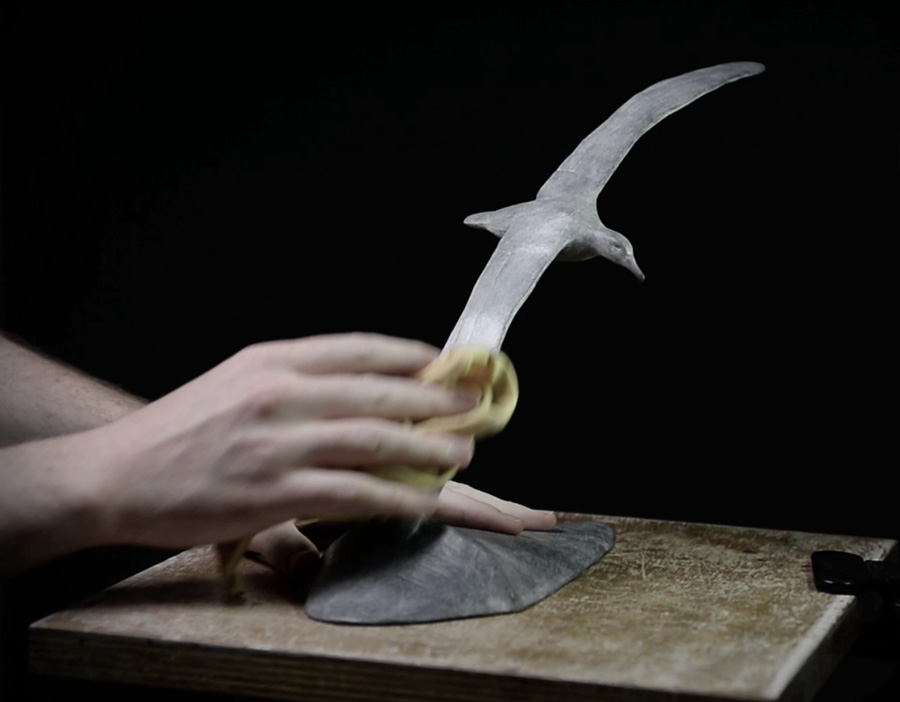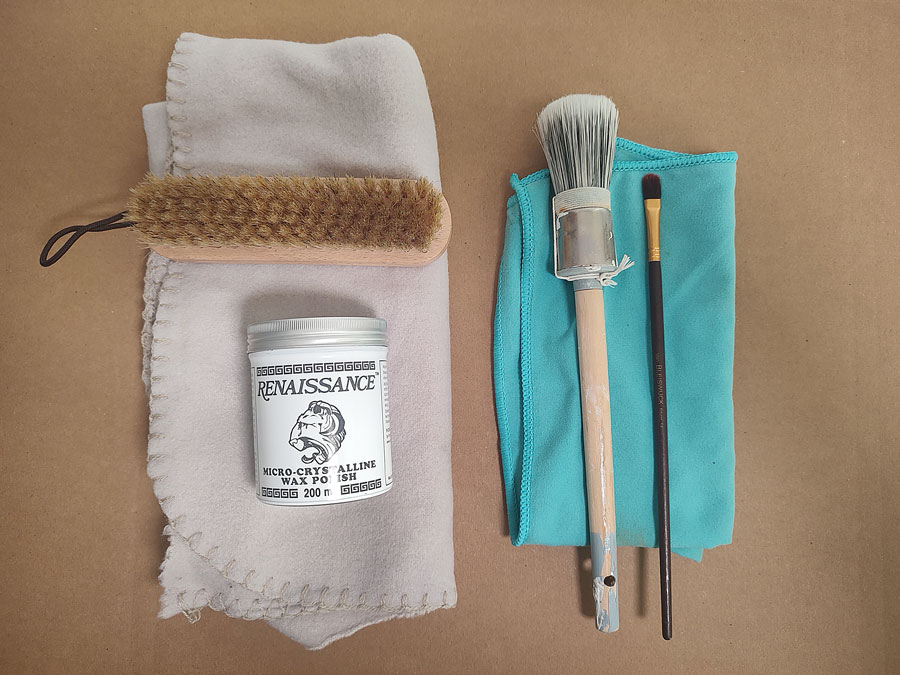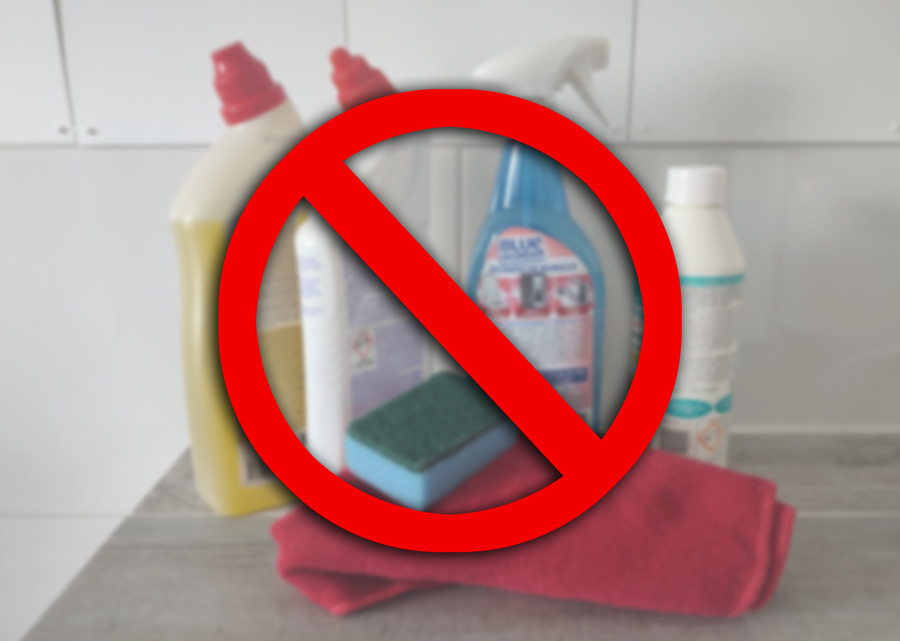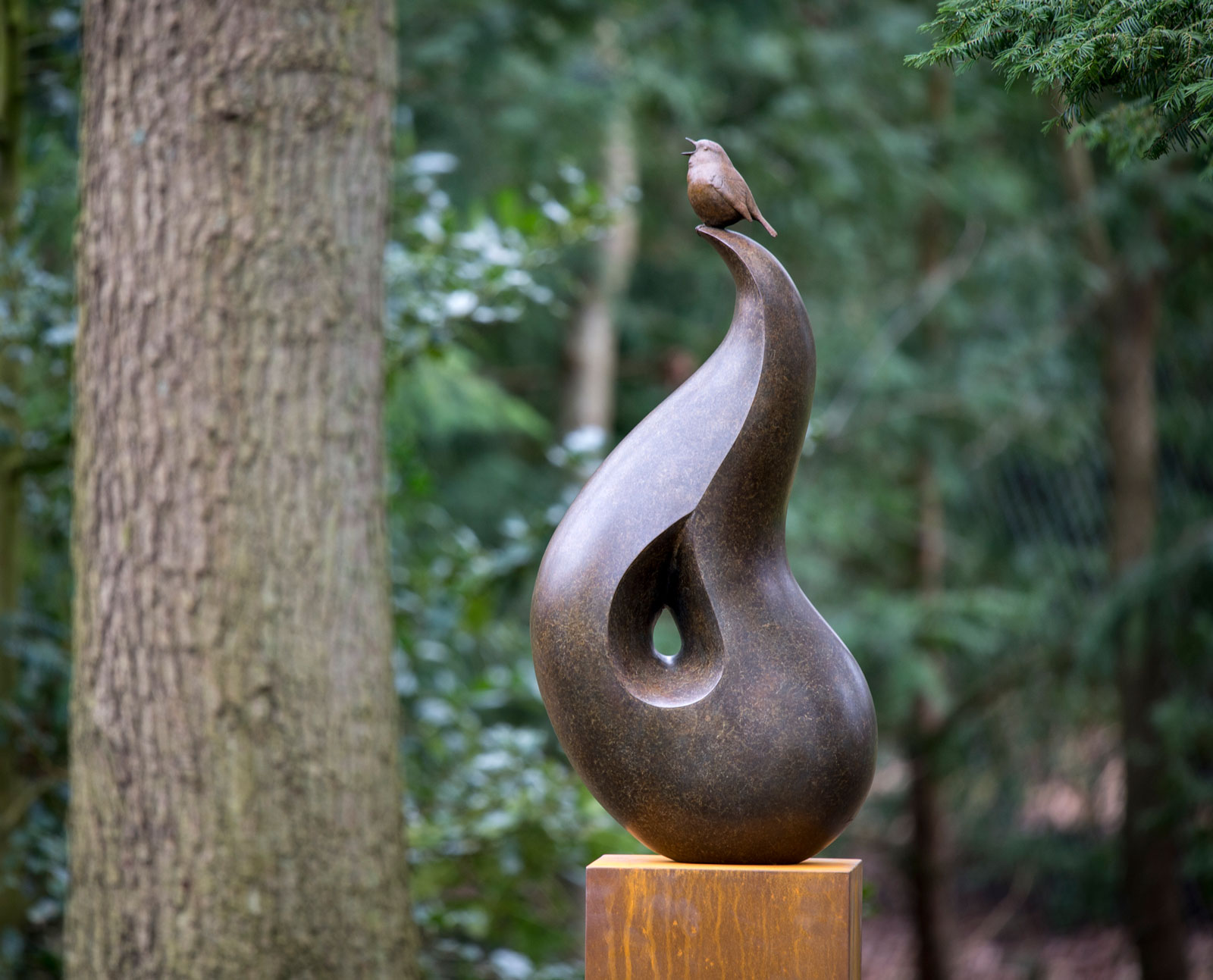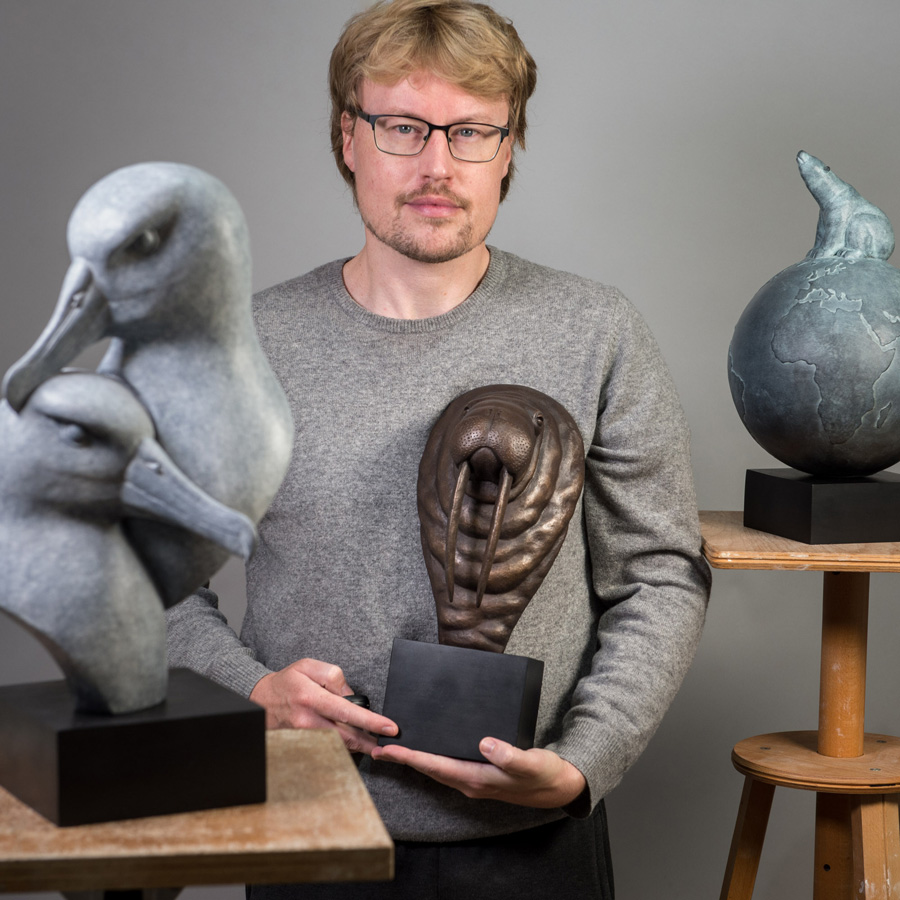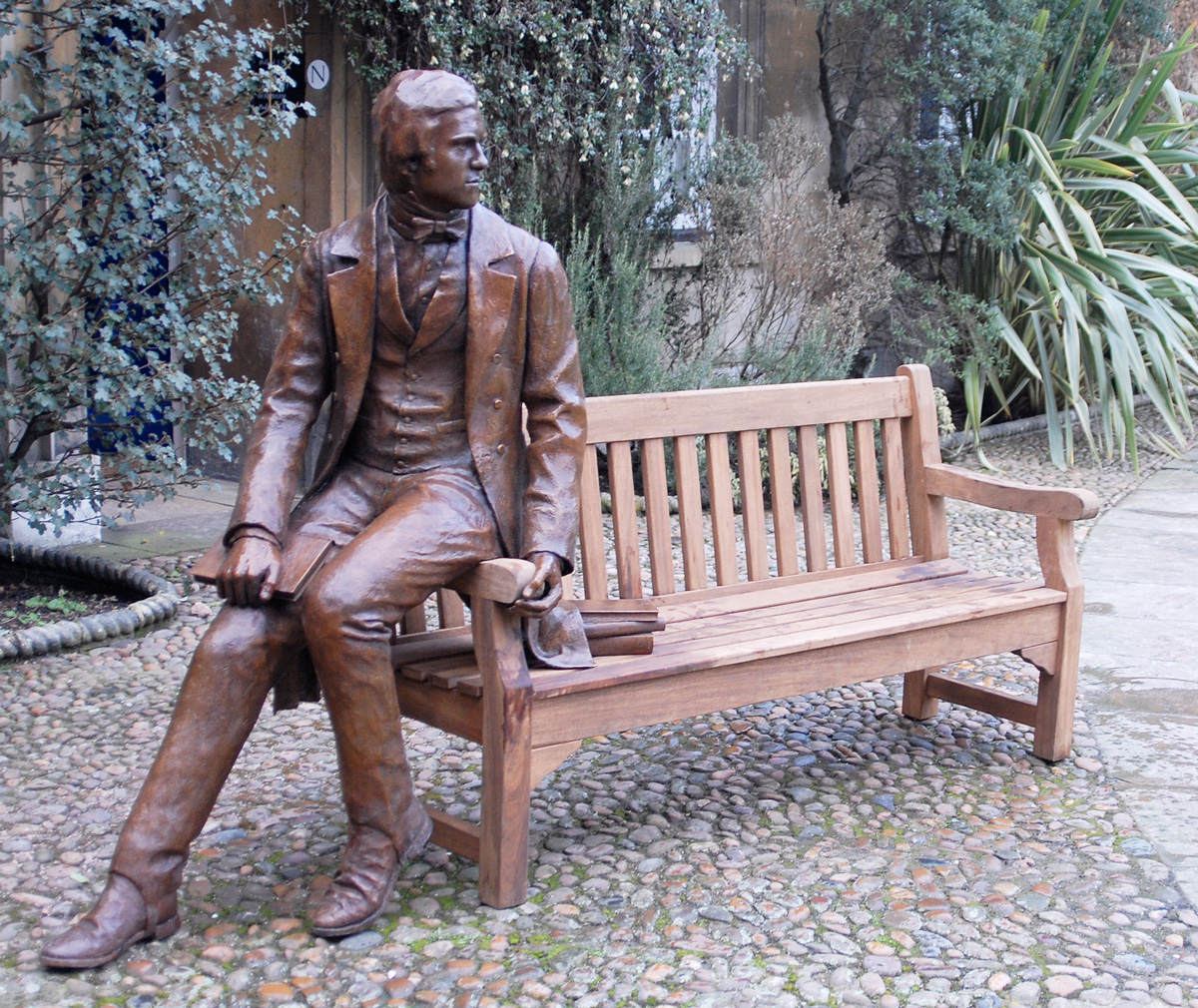Sculpture Maintenance
Bronze sculptures require occasional maintenance to continue looking their best.
Regular Dusting
The simplest way to keep your bronze sculpture looking good is to regularly dust the surface with a clean, soft cloth. It is important that this cloth has not previously been used with any cleaning chemicals as these could discolour the sculpture. If your sculpture has difficult to reach areas then a clean, soft brush can be used to dust inside these recesses. To bring back some of the surface shine you can gently buff the sculpture when dusting – rubbing the surface back and forth with a light pressure in order to shine the waxed surface. It should not be necessary to do this more than twice a year for indoor sculptures; see below for outdoor pieces.
Protecting the Patina
The patina is the surface colour of the bronze that has been produced through the careful application of heated chemicals. To protect this patina, and avoid any further changes to the sculpture’s colour, a coating of paste wax has been applied to each sculpture. This also allows the sculpture to be lightly buffed to give it a beautiful lustre. Over time this surface layer of wax may wear down and a new coat should then be applied. Anthony recommends a microcrystalline wax such as ‘Renaissance Wax’ which can be easily applied with a clean brush, after first removing any dust from the sculpture. A thin coat is all that is required; too much wax will leave brush strokes and the wax could discolour over time. After half an hour, the dried wax can be gently buffed with a clean, soft cloth or brush. The wax surface on indoor sculptures that are not being regularly handled should last for several years before needing to be renewed.
Things to Avoid
- Please never use any cleaning products, or cloths that have been used with cleaning products, on the surface of your bronze sculptures. This is likely to damage or discolour the patina.
- Certain hand creams or perfumes could also react with the patina and so it is best to only handle a sculpture with clean hands, or to wrap the sculpture in a clean cloth when picking it up.
- Never rub or touch a sculpture with abrasive materials such as a wire brushes or abrasive cleaning pads. Be aware of any sharp jewelry when picking up a sculpture, in case it scratches the bronze.
Outdoor Sculptures
Some sculptures can be placed outdoors (please contact Anthony to check if your sculpture is suitable) and these works require additional maintenance. They require re-waxing once or twice a year in order to maintain a good surface coat. It is also possible that these sculptures could become dirty and require cleaning. Tree resin and bird droppings can be particularly damaging to the patina and should be removed as soon as possible with warm water and a soft cloth or brush. Once the dirt has been washed away, and the sculpture has been allowed to completely dry for several hours, the area should be re-waxed. Please avoid using fertiliser sprays, pesticides, chlorine or other cleaning products on or near your outdoor sculpture.
Sculptures by the Sea
Outdoor sculptures that are in environments with a high salt content in the air are likely to have their patina change over time, even with regular waxing. The long term effect is hard to predict, but often results in interesting and beautiful colouration.
Handling and Rubbing
When a sculpture is regularly handled or rubbed in a particular spot this can wear away not only the wax coating, but also the surface patina beneath. The result can be a golden patch; the colour of raw bronze. This is commonly seen in public statues that are regularly touched by the public.
Aging Gracefully
Even with regular re-waxing and dusting it is possible that a sculpture’s patina will slowly change over the years due to the natural oxidation process. This is what gives some of the world’s most famous public sculptures their distinct and beautiful appearance and should not necessarily be seen as a bad thing. Whilst a bronze sculpture will last for many centuries, its appearance will gradually alter over time, writing its history on its surface.


